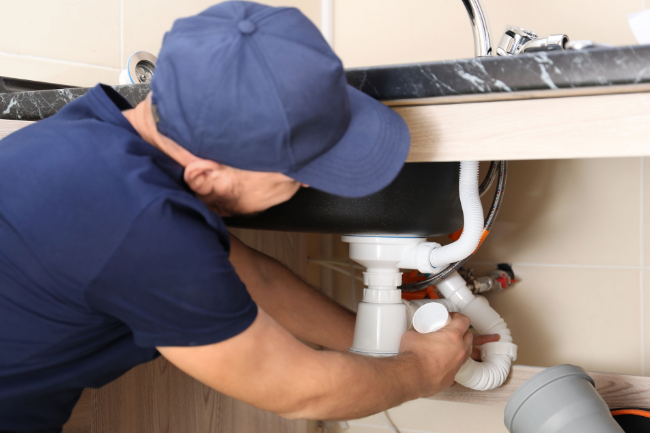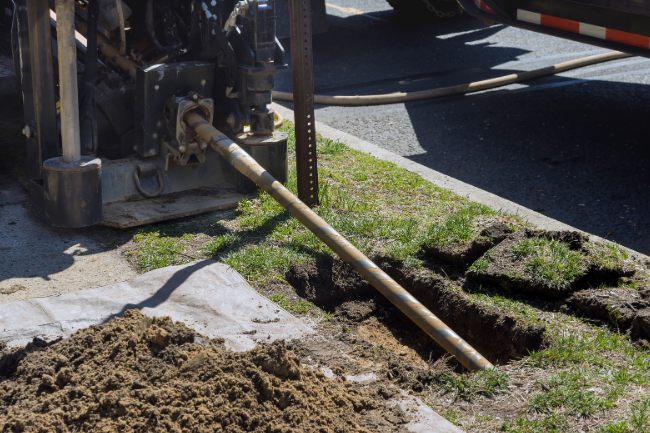8 Common Trenchless Technology Problems
Posted by William Heinselman on

Trenchless sewer repair is an excellent technology, one that can help home and business owners throughout Sacramento repair critical water utility infrastructure without having to dig landscaping and sidewalks.
Using a trenchless solution for plumbing repair can help minimize labor, save on resource costs, eliminate expensive landscaping bills, and provide incredible speed/convenience compared to traditional sewer repair.
However, as convenient as trenchless technologies can be, many people wonder what the biggest problem with it is. After all, there must be some kind of tradeoff, right?
8 Trenchless Technology Problems

Well, there are a few trenchless technology problems that you might want to know about before you settle on it as your go-to fix for your plumbing issues. So, in the interest of full disclosure, here are some of the biggest trenchless technology problems that you might run into:
1: Limited Choices of Material When Replacing/Relining Pipes
Trenchless solutions such as pipe bursting and lateral pipe lining require the use of specific pipe materials. This can limit your options for replacement.
However, this is usually a non-issue. The materials used for most trenchless procedures are extremely durable with useful lives measured in decades.
2: Some Forms of Damage Cannot Be Fixed Without Trenching
There are some situations where trenchless technology might not be able to fix the problem alone. This is because most trenchless technologies rely on the currently existing pipe to complete the repair.
For example, a completely collapsed pipe would block the chain used to drag a pipe bursting head through a line and keep a new lining from being inserted. Also, warps in the pipe caused by shifting soil might also affect the trenchless repair.
This is why an inspection is so crucial before you pick a repair technology—knowing the nature of the problem can help you pick out the best repair method first and avoid wasting time and money.
3: Trenchless Technologies Cost More than Traditional Ones
Because of the specialized equipment and materials involved, the cost of a trenchless repair solution might be higher than a traditional repair solution. At least, before you take into consideration labor, landscaping, and disruption.
If you look at the bill for just materials and equipment, odds are the trenchless solution will be more expensive upfront. However, variables such as labor and landscaping repair can significantly affect the final cost of your sewer repair.
Basically, if your pipes are close to the surface and doesn’t run under any permanent obstacles (trees, sidewalks, etc.), then it may be more cost-effective to use a traditional trenching repair solution.
However, for pipes deep in the ground, or running under expensive-to-replace landscaping, the reduced labor costs of trenchless can offset the higher cost of equipment and materials.
4: Pipe Lining Could Reduce Overall Pipe Diameter
This is a concern that many have when using trenchless repair solutions on smaller water supply pipes: the addition of a new layer or coating inside the pipe could reduce the diameter of the pipe and restrict flow.
However, cured-in-place pipe (CIPP) lining materials are extraordinarily thin and strong. In most pipes, it would take many repeat applications of new CIPP layers to significantly restrict flow.
Also, CIPP lining isn’t the only trenchless repair option. Techniques such as pipe bursting can actually allow you to replace a smaller-diameter pipe with a larger one—without having to dig up the old pipe.
5. Limited Access to Underground Utilities
Limited access to underground utilities can cause major trenchless technology problems. This is because the process involves accessing and repairing pipes without any excavation, which requires precise location and mapping of existing underground utilities. If there is limited access or inaccurate information about the location of these utilities, it can lead to serious problems such as damaging other utility lines or disrupting essential services.
Additionally, limited access may also hinder the ability to properly inspect and assess the condition of existing pipes, potentially resulting in incomplete or ineffective repairs. Therefore, it is crucial for proper planning and coordination with utility companies to ensure safe and successful trenchless pipe repair.
6. Inadequate Soil Support
Inadequate soil support can cause numerous problems during trenchless pipe repairs such as trench collapse, pipe misalignment, or even complete failure of the repair. Trenchless methods rely heavily on the existing soil conditions for stability and proper installation of the new pipe. If the soil cannot provide sufficient support, it can lead to costly and time-consuming setbacks, ultimately defeating the purpose of using trenchless technology. To avoid this, contractors must carefully assess and prepare the soil before commencing any trenchless pipe repair project to ensure its success.
7. Pipe Damage Due to Extreme Weather
Extreme weather can significantly impact the success of trenchless pipe repair. In situations where heavy rainfall or flooding occurs, it can be challenging to access the underground pipes due to unsafe working conditions. The ground may become unstable, making it difficult to excavate and repair the pipes effectively.
Extreme heat or freezing temperatures can also cause problems during trenchless pipe repair. Excessively hot weather may lead to the expansion of pipes, causing them to crack and break. On the other hand, freezing temperatures can freeze the soil, making it more challenging to dig and maneuver the equipment needed for pipe repair.
8. Soil Movement Causing Misalignment of Pipes
Soil movement can cause problems with trenchless technology by affecting the stability of the underground pipes or cables being installed. As the soil shifts and settles, it can create voids or gaps around the newly installed infrastructure, leading to potential leaks or damage over time. In extreme cases, excessive soil movement can even cause complete failure of the trenchless installation, resulting in costly repairs and delays.
Get the Best Plumbing Repair Solution to Meet Your Needs!
Because the choice between traditional plumbing and trenchless technology is so often a situational one, it’s important to consult with an experienced plumber who has mastered both before settling on one or the other.
An expert opinion could help you get the best bang for your buck, and save you considerable headaches down the road.
Topics: Trenchless Technology, Sewers


![Repiping Your Sacramento Home [6 Steps]](https://www.expresssewer.com/hs-fs/hubfs/plumbing%20tools%20and%20blueprints.jpeg?width=550)




